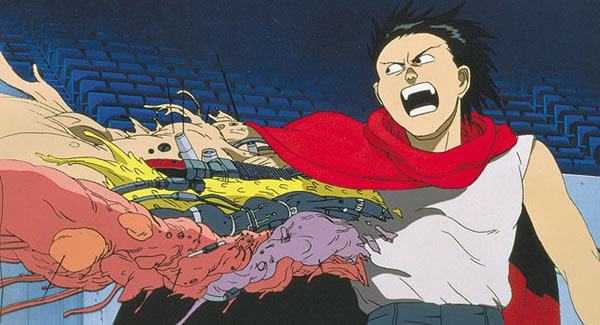Part 108: Bonus - A bit more into Japanese Horror and Tokusatsu Villains
Bonus - A bit more into Japanese Horror and Tokusatsu VillainsI do recommend taking a read on Chapter 105 again to keep it fresh in case you forgot about it.
Previously I mentioned about the origins of the body horror from classic Japanese Horror Cinema as well as classic Western Horror like The Fly. I'd like to point out some more themes in common with Tokusatsus which also take great inspiration from the classics. While it's clear to us that FFVII takes heavy inspiration from the original The Thing From Another World, it's not alone in that.
So let's take a look at some themes, shall we? First: Outer space. Almost every Tokusatsu has an element from the outer space. FFIV is very similar to the kind of productions being done at the time. The moon as a scenario for a final battle is not unusual - Also during the 90's you had Bubblegum Crisis Tokyo 2040, which while not a live-action, is still very much an anime tokusatsu. The final villain is battled in outer-space.
https://www.youtube.com/watch?v=BXKIdyDWJTg
A common theme that is used is to have an alien "final boss" that is immobile. There's a great deal of psychological horror to this. The claustrophobia and fear of being in paralysis, from one's own self, as well the perception that someone who needs not to move is the true mastermind. During FFVII we see this twice. Sephiroth himself trapped in the Lifestream, Jenova's body who's never seen moving on her own. Even as a humanoid, we never see Sephiroth at the crater moving, and the very final duel we have with him is very nebulous as to its whereabouts (Cloud's mind? The Lifestream?). And then we see Sephiroth's final forms, which do resemble a lot, well...
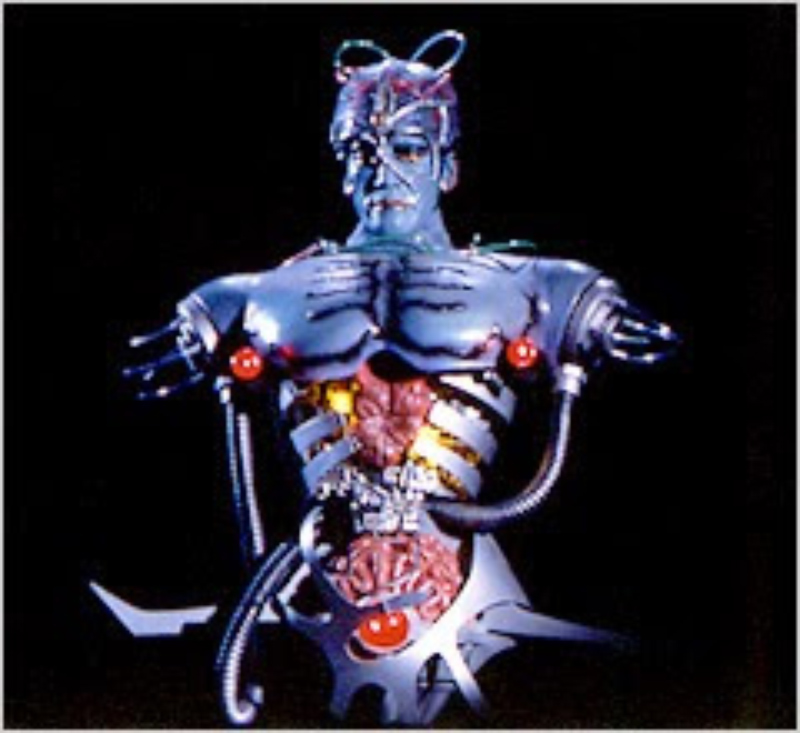
Bazoo, from Changeman (1985). It's also important to note that Bazoo himself only appears like that as an illusion - his true form is that of an entire planet (again, the moon theme). Much like Galactus, his intention is to devour the entirety of Earth then move on, consuming the energy of planets as he travels through the universe - which is not that different from Jenova's parasitic instincts, or Sephiroth's own EU quote about using this planet as vessel to sail through space, after consuming its lifestream. Back to Bubblegum Crisis, one of the villain's form is also immobile - an immobile statue after fusing with a physical structure.
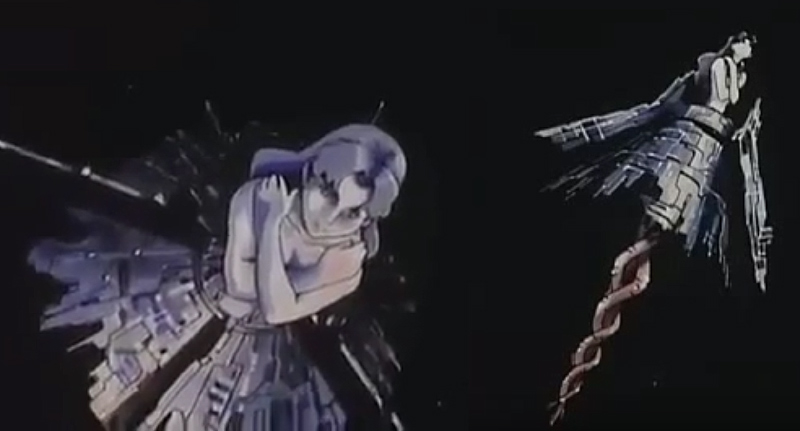
Compare with this shot, of an also mostly immobilized (even chained) entity. Also, we'll take a look at more examples of this theme of "one's real limbs imprisoned within a monstrous body, in case Bizarro Sephiroth wasn't enough.
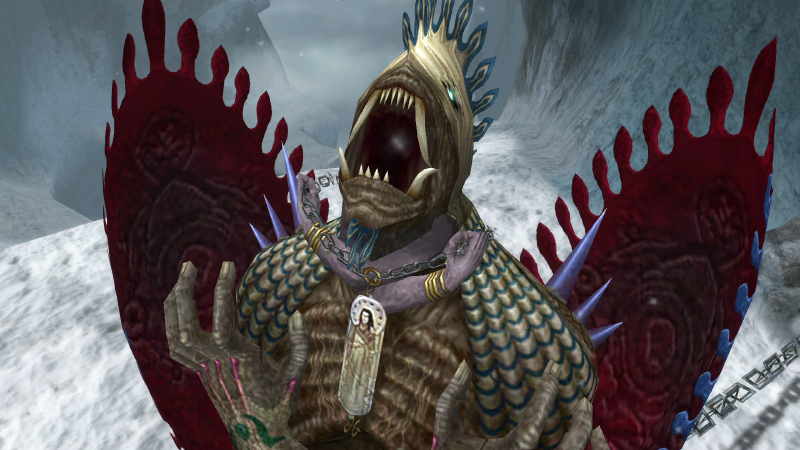
As for the mechanical fusion, FFVI has imagery like this, as does - once again - Tetsuo the Iron Man. It's also worth comparing this shot of both villains from Bubblegum and FFVII, and this notion of disembodied horror:

The villain in question is presented as an AI being built and questioning morality. She has a very interesting (and seemingly well-translated, preserving very debated concepts such as qualia and the philosophy of mind) monologue, which made the anime very boring for teenagers at the time I suppose, but it goes very well with the philosophical themes present in FFV to FFIX. If you listen to it you'll probaby be able to see references in common to other works at the time such as The Matrix and later Caprica, themes such as ethics in robotics and AI which are philosophical debates that are very, very old, as well as others.
These horrific monstrosities are like active attempts into tapping into some sort of uncanny valley. Compare also Bizarro Sephiroth with Don Horror, from Space Sheriff Gavan (1982), and you should be able to see some similarities.
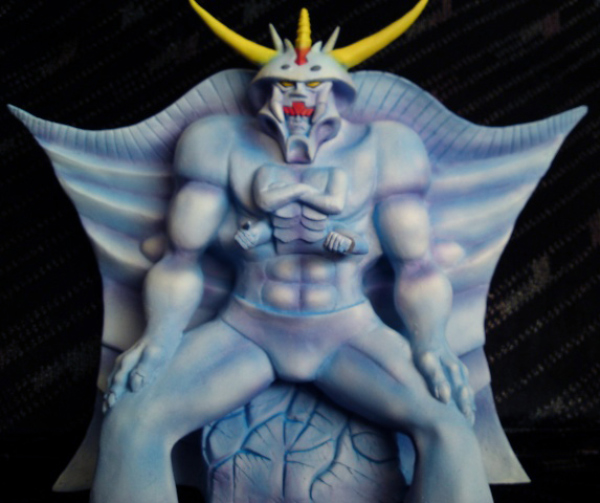
Or compare it to Necron, from FFIX:

While we're on the theme of living Planets like the previously mentioned Bazoo and FFVII's overly literal interpretation of the Gaia theory, we have FFVIII with yet another interpretation - a moon whose surface is literally covered with monsters.
And since we're talking about FFVIII - another interesting theme is witches. Compare Edea and Ultimecia...
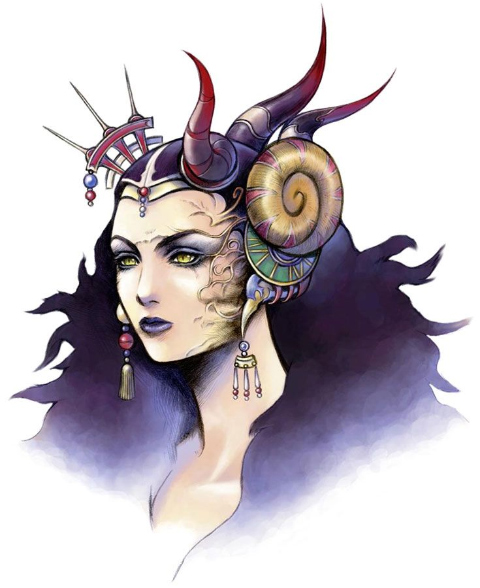

with Witch Bandora, arch-nemesis of the Zyurangers (1992). You probably know her better as Rita Repulsa:
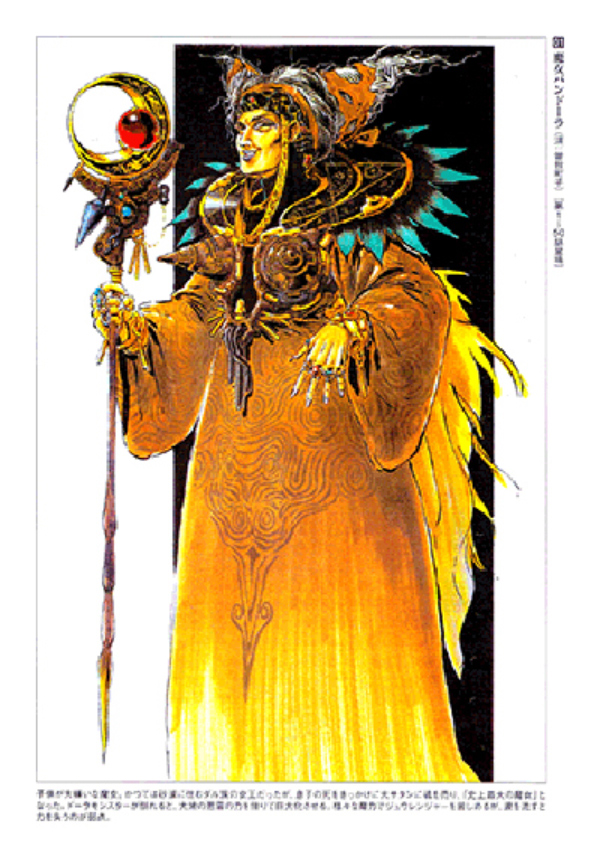
The folkloric-looking witch, with very ornamented witch rags is very traditional. Machiko Soga (Rita Repulsa) herself did a number of these characters over the years:


Since you guys miss Brazil talk:

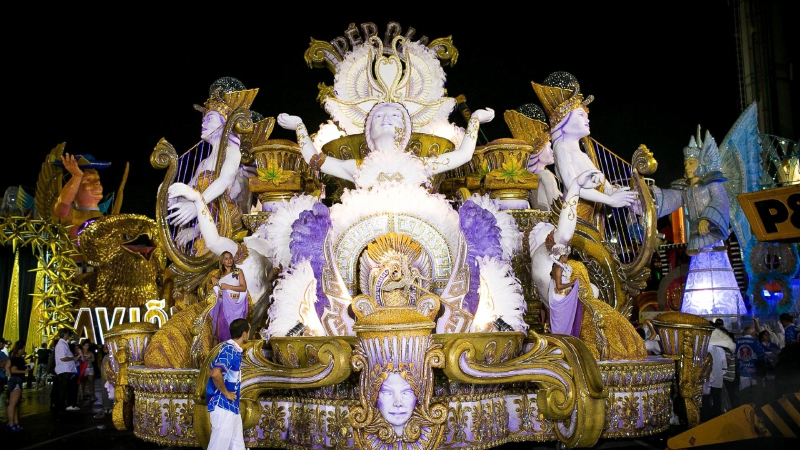
Edea's mind-control is also not exactly novel. Sheema from Changeman (1985) and the closest thing the series had to a "witch" character was herself under a spell and was revealed to be one of the good guys. A lot of the witch characters seem to emphasize curses and mind-control, such as Gilza from Juspion (1985).
Last but not least, combine any of these words: True, Life, Ultimate with Form and you have probably the biggest cliché all around.
I mean, Flashman (1986) has a villain who... well, travels from planet to planet to gain their powers in order to become the "Ultimate Life Form" through combining genetics of multiple species. Add genetic manipulation as a very present theme overall, and you get the point.

Queen Pandora from Spielban (1986) becomes Pandora Battle Mechanoid, Pandora Lifeform and Pandora Life-Mechanoid. If this made you think of Hojo, you're starting to get the gist of it.
FFXIV also has some very Tokusatsu inspired garbs:

I felt like I should point the similarities to Tokusatsus because I think they can be somewhat obscure - everyone knows they exist but they're not particularly popular outside of their western counterparts (like Power Rangers) and while the original 80's and 90's stories have some very interesting sci-fi concepts and philosophical themes that only an adult will get underneath, their presentation tends to be very straightforward as procedural kid shows that don't scale at all with your age, unless you're one of those hardcore fans who elevate them to cult status or something.
I am, however, personally a fan of 80's Japanese Horror. It's fun to see how these themes connect together, and the web of references tend to go very deep, intertwined between western and eastern cultures all the way to the 60's and 50's.
